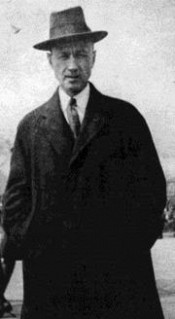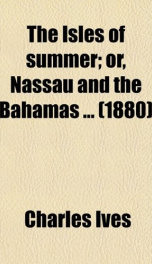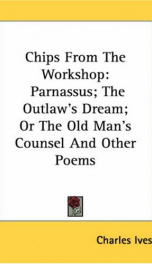Ives Charles

Charles Edward Ives (October 20, 1874 – May 19, 1954) was an American modernist[1] composer. He is widely regarded as one of the first American composers of international significance. Ives' music was largely ignored during his life, and many of his works went unperformed for many years. Over time, Ives came to be regarded as an "American Original".[2] Ives combined the American popular and church-music traditions of his youth with European art music, and was among the first composers to engage in a systematic program of experimental music, with musical techniques including polytonality, polyrhythm, tone clusters, aleatoric elements, and quarter tones,[3] thus foreshadowing virtually every major musical innovation of the 20th century. Sources of Charles Ives’s tonal imagery are hymn tunes and traditional songs, the town band at holiday parade, the fiddlers at Saturday night dances, patriotic songs, sentimental parlor ballads, and the melodies of Stephen Foster. Charles Ives was born in Danbury, Connecticut, the son of George Ives, a U.S. Army bandleader in the American Civil War, and his wife Mary Parmelee. A strong influence of Charles's may have been sitting in the Danbury town square, listening to his father's marching band and other bands on other sides of the square simultaneously. George Ives's unique music lessons were also a strong influence on Charles; George Ives took an open-minded approach to musical theory, encouraging his son to experiment in bitonal and polytonal harmonizations. It was from his father that Charles Ives also learned the music of Stephen Foster.[4] Ives became a church organist at the age of 14[5] and wrote various hymns and songs for church services, including his Variations on 'America' .[6] Ives moved to New Haven in 1893, enrolling in the Hopkins School where he captained the baseball team. In September 1894, Ives entered Yale University, studying under Horatio Parker. Here he composed in a choral style similar to his mentor, writing church music and even an 1896 campaign song for William McKinley.[7] On November 4, 1894 Charles's father died, a crushing blow to the young composer, but to a large degree Ives continued the musical experimentation he had begun with George Ives. At Yale College Ives was a prominent figure; he was a member of HeBoule, Delta Kappa Epsilon (Phi chapter) and Wolf's Head Society, and sat as chairman of the Ivy Committee.[7] He enjoyed sports at Yale and played on the varsity football team. Michael C. Murphy, his coach, once remarked that it was a crying shame that Charles Ives spent so much time at music as otherwise he could have been a champion sprinter.[8] His works Calcium Light Night and Yale-Princeton Football Game show the influence of college and sports on Ives' composition. He wrote his Symphony No. 1 as his senior thesis under Parker's supervision.[7] He continued his work as a church organist until May 1902. In 1899 he moved to employment with the insurance agency Charles H. Raymond & Co., where he stayed until 1906. In 1907, upon the failure of Raymond & Co., he and his friend Julian Myrick formed their own insurance agency Ives & Co., which later became Ives & Myrick, where he remained until he retired.[9] During his career as an insurance executive, Ives devised creative ways to structure life-insurance packages for people of means, which laid the foundation of the modern practice of estate planning . His Life Insurance with Relation to Inheritance Tax, published in 1918, was well-received. As a result of this he achieved considerable fame in the insurance industry of his time, with many of his business peers surprised to learn that he was also a composer. In his spare time he composed music and, until his marriage, worked as an organist in Danbury and New Haven as well as Bloomfield, New Jersey and New York City.[7] In 1907, Ives suffered the first of several "heart attacks" (as he and his family called them) that he had through out his lifetime. These attacks may have been psychological in origin rather than physical. Following his recovery from the 1907 attack, Ives entered into one of the most creative periods of his life as a composer. After marrying Harmony Twitchell in 1908,[9] they moved into their own apartment in New York. He had a remarkably successful career in insurance, and continued to be a prolific composer until he suffered another of several heart attacks in 1918, after which he composed very little, writing his very last piece, the song Sunrise, in August 1926.[9] In 1922, Ives published his 114 Songs which represents the breadth of his work as a composer — it includes art songs, songs he wrote as a teenager and young man, and highly dissonant songs such as "The Majority."[9] According to his wife, one day in early 1927 he came downstairs with tears in his eyes: he could compose no more, he said, "nothing sounds right." There have been numerous theories advanced to explain the silence of his late years, which seems as mysterious as the last several decades of the life of Jean Sibelius, who also stopped composing at almost the same time. While Ives had stopped composing, and was increasingly plagued by health problems, he did continue to revise and refine his earlier work, as well as oversee premieres of his music.[9] After continuing health problems, including diabetes, in 1930 he retired from his insurance business, which gave him more time to devote to his musical work, but he was unable to write any new music. During the 1940s he revised his Concord Sonata, publishing it in 1947 (an earlier version of the sonata and the accompanying prose volume, Essays Before a Sonata were privately printed in 1920).[10] Ives died in 1954 in New York City. Ives was formally trained in music at Yale. His First Symphony shows a grasp of the academic skills needed to write in the traditional sonata form of the late 19th century, as well as a tendency to display an individual and iconoclastic harmonic style. His father was a band leader, and like Hector Berlioz, Ives was fascinated with both outdoor music and instrumentation. His attempts to fuse these interests coupled with his devotion to Beethoven set the direction for the remainder of his musical life. Ives published a large collection of his songs, many of which had piano parts which paralleled modern movements in Europe, including bitonality and pantonality. He was an accomplished pianist, capable of improvising in a variety of styles, including those which were then quite new. Although he is now best known for his orchestral music, he composed two string quartets and other works of chamber music. His work as an organist led him to write Variations on "America" in 1891, which he premiered at a recital celebrating the Fourth of July. The piece takes the tune (which is the same one as is used for the national anthem of the United Kingdom) through a series of fairly standard but witty variations; it was not published until 1949. The variations differ sharply: a running line, a set of close harmonies, a march, a polonaise, and a ragtime allegro; the interludes are one of the first uses of bitonality;[11] William Schuman arranged this for orchestra in 1964 and again for symphonic band in 1968. Around the turn of twentieth century Ives composed his Symphony No. 2, signifying a departure from the conservative approach of his composition teacher at Yale, Horatio Parker. His first symphony is a more conventional piece since Parker had insisted that he stick to the older European style. However, the second symphony, composed after he had graduated, adopted new techniques that included musical quotes, unusual phrasing and orchestration, and even a blatantly dissonant 11 note chord ending the work. The second symphony foreshadows his later compositional style even though the piece is relatively conservative by Ives' standards. In 1906 Ives composed what some have argued was the first radical musical work of the twentieth century, "Central Park in the Dark".[12] The piece evokes an evening comparing sounds from nearby nightclubs in Manhattan (playing the popular music of the day, ragtime, quoting "Hello My Baby" and even Sousa's "Washington Post March") with the mysterious dark and misty qualities of the Central Park woods (played by the strings). The string harmony uses shifting chord structures that are not solely based on thirds but a combination of thirds, fourths, and fifths. Near the end of the piece the remainder of the orchestra builds up to a grand chaos ending on a dissonant chord, leaving the string section to end the piece save for a brief violin duo superimposed over the unusual chord structures. Ives had composed two symphonies, but it is with The Unanswered Question (1906), written for the highly unusual combination of trumpet, four flutes, and string orchestra, that he established the mature sonic world that became his signature style. The strings (located offstage) play very slow, chorale-like music throughout the piece while on several occasions the trumpet (positioned behind the audience) plays a short motif that Ives described as "the eternal question of existence". Each time the trumpet is answered with increasingly shrill outbursts from the flutes (onstage) — apart from the last: The Unanswered Question. The piece is typical Ives — it juxtaposes various disparate elements, it appears to be driven by a narrative never fully revealed to the audience, and it is tremendously mysterious. It has become one of his more popular works.[13] Leonard Bernstein borrowed its title for his Charles Eliot Norton Lectures in 1973, noting that he always thought of the piece as a musical question, not a metaphysical one. Starting around 1910 Ives began composing his most accomplished works including the "Holidays Symphony" and arguably his best-known piece "Three Places in New England". Pieces such as The Unanswered Question were almost certainly influenced by the New England transcendentalist writers Ralph Waldo Emerson and Henry David Thoreau.[9] These were important influences to Ives, as he acknowledged in his Piano Sonata No. 2: Concord, Mass., 1840–60 (1909–15), which he described as an "impression of the spirit of transcendentalism that is associated in the minds of many with Concord, Mass., of over a half century ago...undertaken in impressionistic pictures of Emerson and Thoreau, a sketch of the Alcotts, and a scherzo supposed to reflect a lighter quality which is often found in the fantastic side of Hawthorne."
do you like this author?
What readers are saying
What do you think? Write your own comment on this book!
write a commentWhat readers are saying
What do you think? Write your own comment on this author!
write a commentBook list

the isles of summer or nassau and the bahamas
Series:
Unknown
Year:
Unknown
Raiting:
4/5
Purchase of this book includes free trial access to www.million-books.com where you can read more than a million books for free. This is an OCR edition with typos. Excerpt from book: CHAPTER III. New Providence. Killarney and Cunningham Lakes. Caves and Caw Earth. The Mermaid's Pool. Nassauits Streets, Public and Private Buildings, and Population. The Poor and Happy Negroes. Fort Fincastle and its Signals. Grant's Town and other Suburban Villages. Fort Charlotte its Subterranean Rooms and Charming (hit-look. Lunching at the Expense of the British Queen. Removal of the Old Barracks. Fort Montague. A Luxuriant Growth of Titles. Nassau Harbor and its Bar. Observing the Breakers. Shells and Shell-work. Nassau's Public Library. "This sceptered isle; This earth of majesty; this scat of Mars; This other Edendemi-paradise."Shakespeare. " The poor contents him with the care of heaven."Pope. The island of New Providence, although small in size and greatly deficient in soil, far transcends in importance all the islands with which it is more immediately associated. Nassau, the Bahama capital, reposes in calm, quiet dignity upon the northern slope of the hill that rises to a height of ninety feet above its northern shore, bathes its feet in the sheltered sea, and lifts its municipal head above the heights that overlook Grant's Town. It is to the entire archipelago what Athens was to Greece and the rising sun to the old Persian fire-worshippers. " Paris is France ;"Nassau is New Providence and the Bahamas. But for its harbor and favorable location, it never would have risen from the rocks, or reposed under the shadows of its tropical and semi-tropical trees. Its superiority as a shelter for ships, caused it to become for these islands the seat and focus of civil, political, ecclesiastical, and military power. Without its geographical and topographical advantages, it is not probable that within its narrow borders a Colonial Governor would ever have had ...
Show more
add to favoritesadd In favorites

chips from the workshop
Series:
Unknown
Year:
Unknown
Raiting:
4/5
Many of the earliest books, particularly those dating back to the 1900s and before, are now extremely scarce and increasingly expensive. We are republishing these classic works in affordable, high quality, modern editions, using the original text and artwork.
Show more
add to favoritesadd In favorites
Book list

the isles of summer or nassau and the bahamas
Series:
Unknown
Year:
Unknown
Raiting:
4/5
Purchase of this book includes free trial access to www.million-books.com where you can read more than a million books for free. This is an OCR edition with typos. Excerpt from book: CHAPTER III. New Providence. Killarney and Cunningham Lakes. Caves and Caw Earth. The Mermaid's Pool. Nassauits Streets, Public and Private Buildings, and Population. The Poor and Happy Negroes. Fort Fincastle and its Signals. Grant's Town and other Suburban Villages. Fort Charlotte its Subterranean Rooms and Charming (hit-look. Lunching at the Expense of the British Queen. Removal of the Old Barracks. Fort Montague. A Luxuriant Growth of Titles. Nassau Harbor and its Bar. Observing the Breakers. Shells and Shell-work. Nassau's Public Library. "This sceptered isle; This earth of majesty; this scat of Mars; This other Edendemi-paradise."Shakespeare. " The poor contents him with the care of heaven."Pope. The island of New Providence, although small in size and greatly deficient in soil, far transcends in importance all the islands with which it is more immediately associated. Nassau, the Bahama capital, reposes in calm, quiet dignity upon the northern slope of the hill that rises to a height of ninety feet above its northern shore, bathes its feet in the sheltered sea, and lifts its municipal head above the heights that overlook Grant's Town. It is to the entire archipelago what Athens was to Greece and the rising sun to the old Persian fire-worshippers. " Paris is France ;"Nassau is New Providence and the Bahamas. But for its harbor and favorable location, it never would have risen from the rocks, or reposed under the shadows of its tropical and semi-tropical trees. Its superiority as a shelter for ships, caused it to become for these islands the seat and focus of civil, political, ecclesiastical, and military power. Without its geographical and topographical advantages, it is not probable that within its narrow borders a Colonial Governor would ever have had ...
Show more
add to favoritesadd In favorites

chips from the workshop
Series:
Unknown
Year:
Unknown
Raiting:
4/5
Many of the earliest books, particularly those dating back to the 1900s and before, are now extremely scarce and increasingly expensive. We are republishing these classic works in affordable, high quality, modern editions, using the original text and artwork.
Show more
add to favoritesadd In favorites
What readers are saying
What do you think? Write your own comment on this author!
write a commentif you like Ives Charles try:
readers also enjoyed
What readers are saying
What do you think? Write your own comment on this author!
write a commentif you like Ives Charles try:
readers also enjoyed
Do you want to exchange books? It’s EASY!
Get registered and find other users who want to give their favourite books to good hands!


